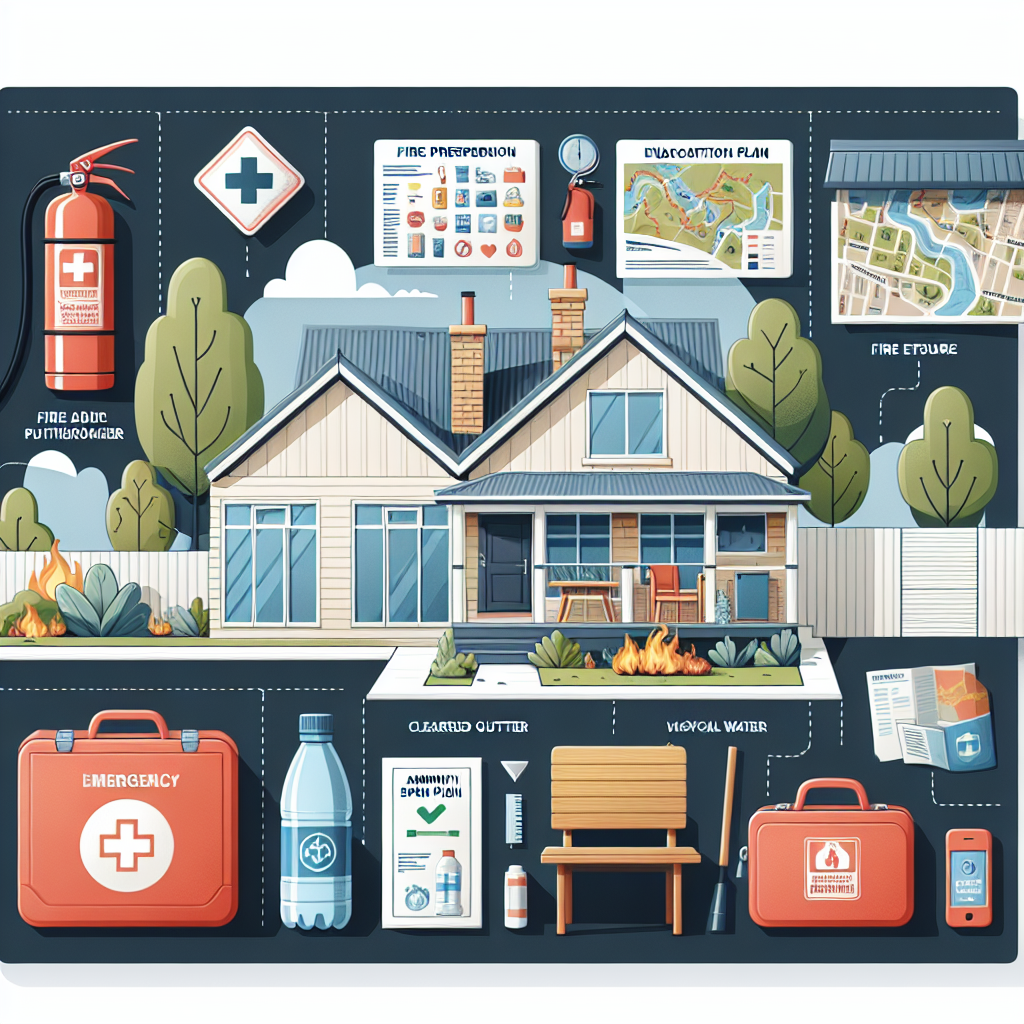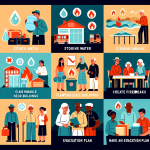Why Bushfire Preparedness is Crucial
Bushfires are a perennial threat, especially in areas prone to dry and hot weather. With climate change heightening the frequency and intensity of these natural disasters, preparation has become more critical than ever. Yet, many people underestimate the danger until it’s too late. Taking a proactive, common-sense approach to bushfire preparedness can significantly reduce risks and safeguard both lives and property.
In this blog post, we’ll provide practical, easy-to-follow tips to ensure that you, your family, and your home are as prepared as possible for bushfire season.
Step 1: Create a Bushfire Survival Plan
Having a survival plan is the foundation of bushfire preparedness. A clear, actionable plan ensures that everyone in your household knows what to do if a bushfire occurs. Here’s how to create one:
- Discuss Responsibilities: Assign roles to family members, such as who will manage emergency kits or help with evacuations.
- Identify Safe Zones: Determine which areas in your home or community are least at risk from fire.
- Set Evacuation Triggers: Decide when you will leave, such as when there’s an official warning or when local conditions become hazardous.
- Practice Regularly: Run practice drills to familiarize everyone with the plan and identify any gaps that need addressing.
Having a plan in place not only saves time during an emergency but can also reduce panic, increasing your chances of staying safe.
Step 2: Prepare Your Property
Your property should be the first line of defense against bushfires. Simple maintenance tasks can minimize the risk of fire spreading to your home. Below are some critical steps:
Clear Vegetation and Debris
- Remove dry leaves, branches, and other flammable materials from gutters, around your home, and in your yard.
- Trim trees and shrubs, ensuring branches are kept at least two meters from your roof.
- Maintain a fuel-free zone around your house by clearing at least 20 meters of grass and vegetation.
Install Protective Measures
- Fit metal mesh screens over windows and doors to prevent embers from entering your home.
- Seal gaps in roofs, walls, and under floors using fire-resistant materials.
- Install a fire-resistant fence and use non-flammable mulch in garden beds close to your house.
- Consider setting up an independent water supply, such as a dam or water tank, with a pump and hose long enough to reach around your property.
Tip: Consult a fire safety professional to assess your home and recommend additional protective measures tailored to your property.
Step 3: Assemble a Bushfire Emergency Kit
A well-stocked bushfire emergency kit is essential for survival during and after a bushfire event. Your kit should contain items that support your basic needs, as well as tools for responding to emergencies.
Key Items to Include:
- Battery-powered radio for listening to emergency broadcasts.
- Flashlight and spare batteries.
- First aid kit and any necessary prescription medications.
- Important documents stored in a waterproof bag (e.g., identification, insurance details).
- Protective clothing, such as long-sleeve shirts, fire-resistant gloves, hats, and masks.
- Water and non-perishable food supplies to last at least three days.
- A fully charged mobile phone and portable charger.
- A fire extinguisher for small fires around your property.
Keep your kit in an easily accessible location so you can grab it quickly in an emergency.
Step 4: Stay Informed
Information is a powerful tool in managing bushfire risks. Staying informed can help you make better decisions before, during, and after a bushfire.
Monitor Local Weather Conditions
Keep an eye on weather forecasts, particularly during fire season. High temperatures, strong winds, and dry conditions increase the likelihood of bushfires.
Sign Up for Alerts
Register for local emergency alert systems to receive real-time notifications about fire risks and evacuation orders. In Australia, for example, you can use apps and services such as Fires Near Me and ABC Emergency.
Understand Bushfire Warnings
Learn the warning levels in your region. Typically, these vary from advice levels (low risk) to emergency warnings (highest risk), and each signals a specific level of danger and recommended action.
Step 5: Know When to Stay or Leave
One of the most critical decisions during a bushfire is whether to stay and defend your property or evacuate. While some properties are designed and prepared to withstand bushfires, many are not.
Consider these factors before deciding:
- Your physical fitness and ability to respond under stress.
- The condition and level of preparedness of your property.
- Access to reliable communication and emergency resources.
- The proximity of fire to your location and time available to evacuate.
If authorities recommend evacuation or if you feel unsafe, leave immediately. Staying too long increases the risk of becoming trapped.
Step 6: After the Bushfire
Returning to your property after a bushfire can be dangerous. Follow these steps to ensure your safety:
- Wait for an official declaration that it’s safe to return.
- Inspect your property for structural damage and hidden embers before entering.
- Avoid potentially contaminated water sources and follow any boil-water advisories.
- Document damage for insurance purposes, but only re-enter your home if authorities deem it safe.
Final Thoughts
Preparing for bushfires is about more than just protecting your home – it’s about safeguarding lives. A combination of common-sense planning, property maintenance, and staying informed can help significantly reduce bushfire risks. Remember, bushfire preparedness is an ongoing process. Regularly revise your plans, update your emergency kit, and stay vigilant to protect what matters most.
By following these essential tips, you can face bushfire season with greater confidence and peace of mind.


